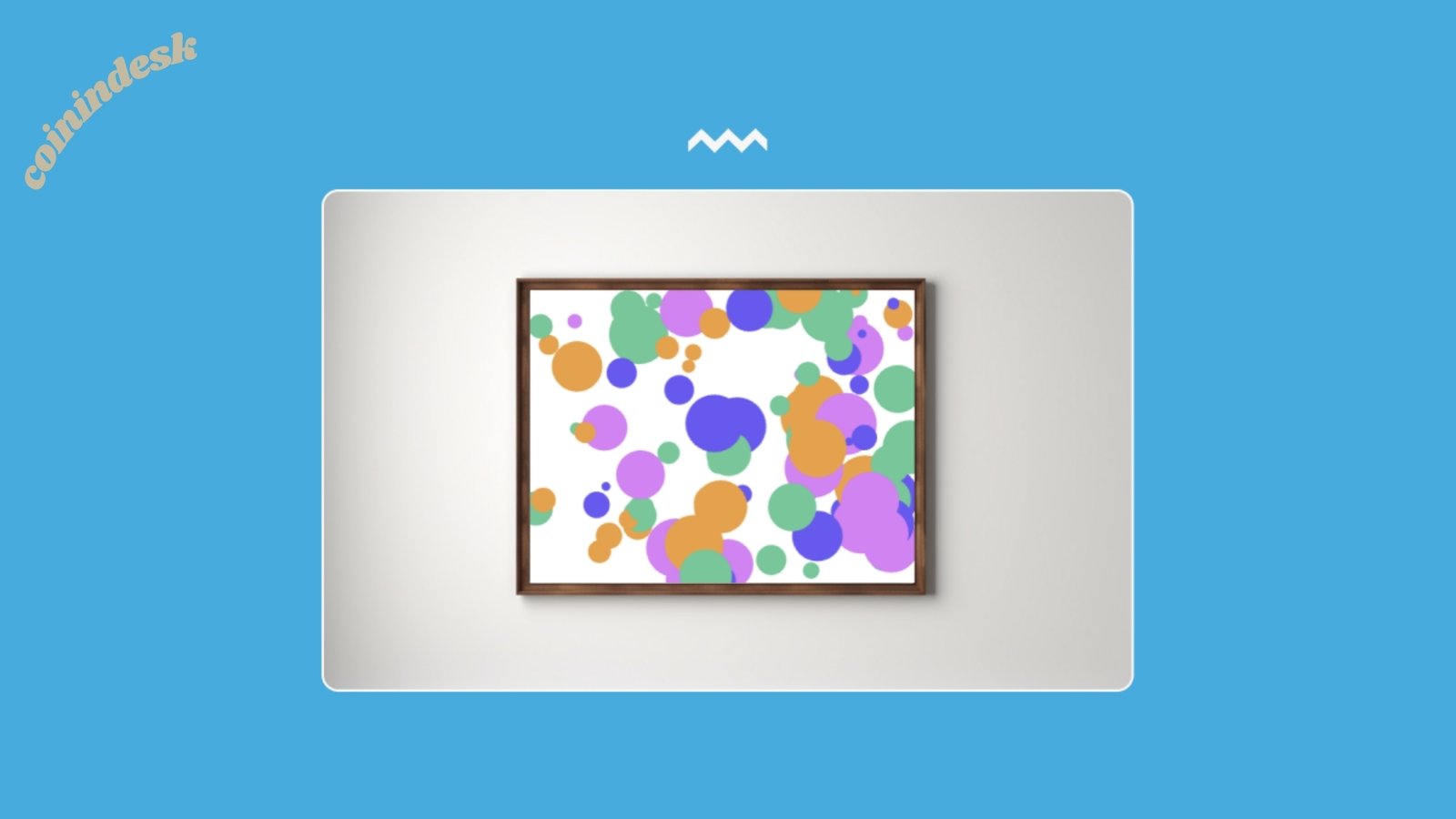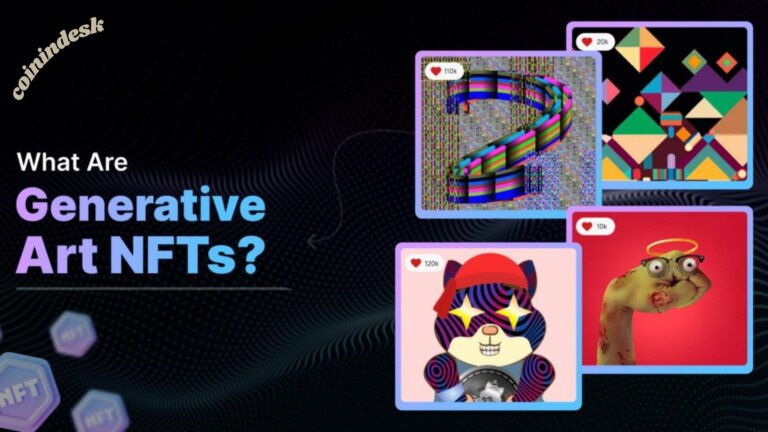Generative Art NFTs. Generative art NFTs are digital artworks created using algorithms and minted as unique tokens on the blockchain. Through generative art, automated systems can produce one-of-a-kind works of art. Minting these artworks as nonfungible tokens (NFTs) on a blockchain provides a secure and verifiable record of ownership and authenticity.
Generative art’s rise in the digital era signifies a sea change in the production and dissemination of art. Using advanced computational methods and programming languages like Python, Processing, and p5.js, artists can now create works of art that can change over time or react to different stimuli. There are infinite possible outcomes, and each piece of generative art is completely one-of-a-kind because this method pushes the limits of conventional art by incorporating aspects of complexity, randomness, and interaction.
Integrating NFTs with art has transformed how digital artworks are authenticated, owned, and traded. As a new way to invest in and monetize digital art, using blockchain technology to mint NFTs has far-reaching consequences for artists and collectors. Thanks to blockchain’s immutability and transparency, we can track the origin of every item, giving digital goods an air of exclusivity and authenticity that was previously impossible to attain.
How are Generative Art NFTs Created?

Generative art is created on the blockchain as a one-of-a-kind NFT by artists using algorithms that dictate its creation. The creation of generative art NFTs is a mutually beneficial interaction between artists’ creative processes and computer algorithms. Visual artists use programming languages to create rules or code. The artwork’s visual components—shapes, colors, patterns, and motions—must adhere to these guidelines.
Furthermore, creative coding is crucial to producing one-of-a-kind, interactive artworks through generative art NFTs. In addition to enabling preliminary variations, the art can evolve over time or potentially in response to user interaction. They add parameters to control the overall aesthetic and ensure it matches their vision, and they use random elements to ensure each NFT is unique. OpenFrameworks, NodeBox, and Max/MSP are the most well-known creative coding tools.
Once struck as an NFT, the artwork becomes a unique asset on the blockchain. To guarantee the uniqueness and rarity of the artwork, the minting process creates an immutable digital certificate of ownership.
When a collector buys NFTs, it sets off a chain reaction that runs the generative code on the blockchain through a smart contract. The code generates a unique and exclusive version of the artwork for that collector by utilizing randomness based on factors like transaction details or block data.
Why are Generative Art NFTs Unique?
The algorithm-driven creation process of generative art NFTs guarantees that each piece is dynamic and truly unique. The distinctiveness and fluidity of generative art NFTs’ production processes set them apart. Algorithms, parameters set by the artist, and, occasionally, random components or real-time data inputs all interact intricately to produce each work. Because of this, you can be sure that you will get utterly distinct artwork even when you use the same guidelines.
Digital scarcity in art
Blockchain technology has given concrete form to the crucial idea of digital scarcity. In the realm of art, it denotes the capacity to demonstrate the uniqueness, ownership, and restricted availability of digital assets in a society where digital duplication is commonplace and accessible. Generative art NFTs take advantage of this idea by verifying and recording the uniqueness and ownership of each artwork using blockchain technology.
Tokenized art
Metadata, which includes information like the creator’s identity, creation date, and ownership history, gives tokenized and blockchain-represented works of art a distinct identity. This unchanging metadata ensures the permanent preservation of the artwork’s authenticity and origin. This tokenization process is vital for generative art because it guarantees the unique parameters and conditions under which each artwork was generated and asserts each piece’s originality.
Where can Generative Art NFTs be Found?

You can find generative art NFTs on various websites, from general marketplaces to specialized ones. You can find generative art NFTs on several websites focusing on digital art and blockchain. These platforms cover the gamut from large-scale NFT marketplaces to specialized sites for generative and algorithmic art.
NFT marketplaces for generative art
Generative art NFTs are just one of many digital art forms available on NFT marketplaces like OpenSea, Rarible, Nifty Gateway, and SuperRare. Artists can mint, showcase, and sell their artworks as NFTs on these platforms. Artists can sell one-of-a-kind works directly to customers, while collectors can examine extensive collections and even take part in auctions. To provide transparency and insight into the value and provenance of the artwork, these marketplaces frequently feature community ratings, artist profiles, and detailed histories of each piece, including previous ownership and sale prices.
NFT art creation platforms
Generative art and its distinct creation process have dedicated platforms alongside more general NFT marketplaces. One such platform that provides a controlled environment for artists to use their generative algorithms is Art Blocks. After an Art Blocks buyer makes a purchase, the platform’s algorithm creates a one-of-a-kind piece of art by the artist and mints it as a non-fungible token (NFT) on the Ethereum blockchain. In doing so, we guarantee that every item is one-of-a-kind and establish a direct connection between making art and collecting it.
Challenges in Generative Art NFTs
There are a lot of obstacles in the cutting-edge field of generative art NFTs, such as problems with intellectual property, ensuring authenticity, and ethical concerns. Navigating intellectual property rights in digital and generating can be brutal art. Curious about who owns the copyright in generative art—the artist, the algorithm, or the user who manipulates the art to make a finished product—is understandable, given that the artists define the algorithms. Because of this lack of clarity, copyright infringement and ownership issues can arise, making it more challenging to distribute and sell digital artwork.
The system is not infallible, but NFTs provide a way to check the legitimacy and history of digital artworks. It can be challenging to tell if the artworks that customers buy are authentic and original due to the prevalence of fake NFTs, which occur when people mint artworks without the original artist’s permission. Although decentralized blockchain technology is advantageous, it can make regulation and oversight more difficult.
One of the major ethical concerns in the generative art NFT domain is the possibility for algorithms to copy or derive from preexisting artworks without correct attribution or permission. Lastly, Along with the lack of transparency in the art-making process, data and AI in the creative process raise moral questions about legal intellectual property rights and the originality and authenticity of art. These ethical considerations require the development of community best practices and continuous dialogue.


